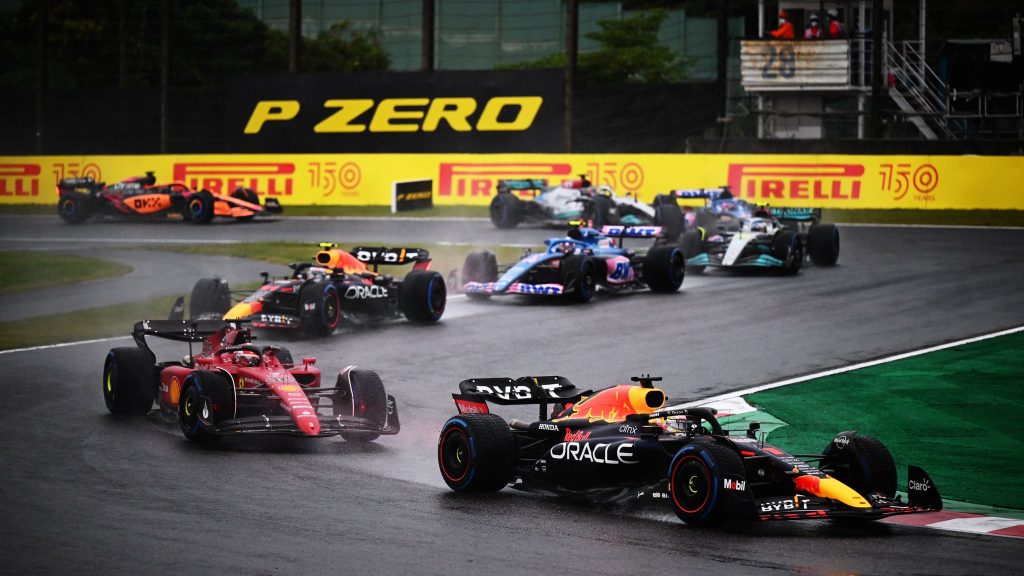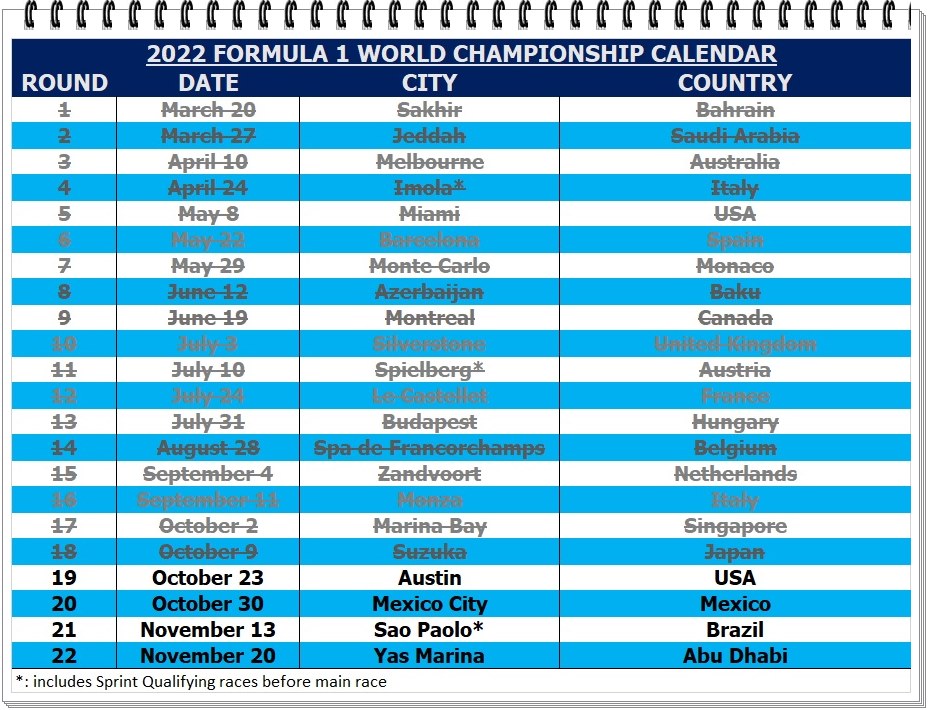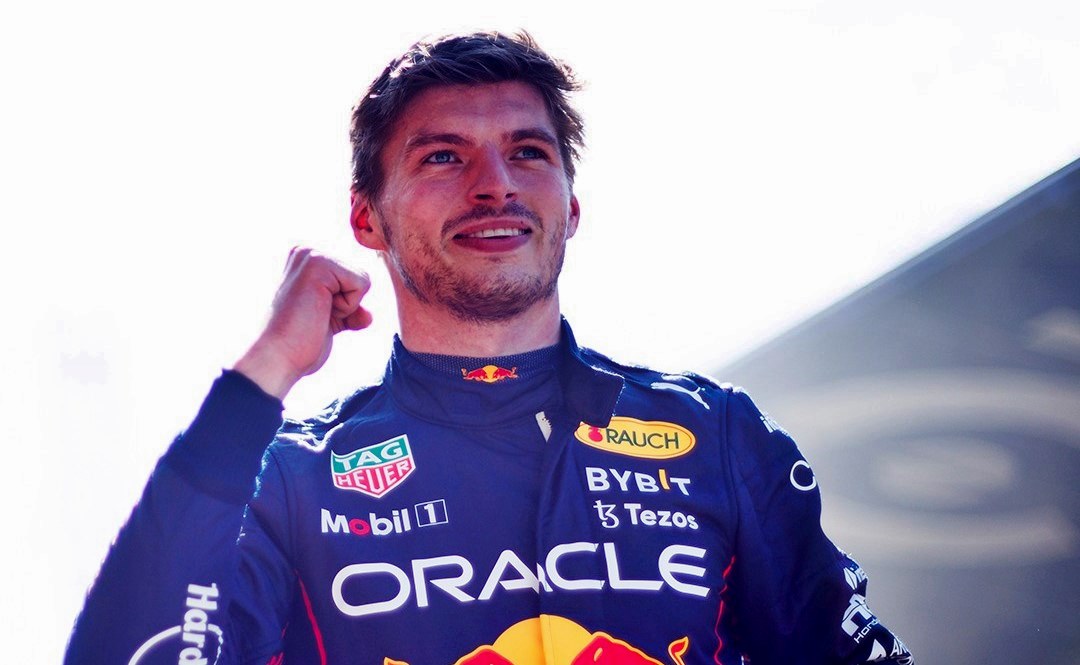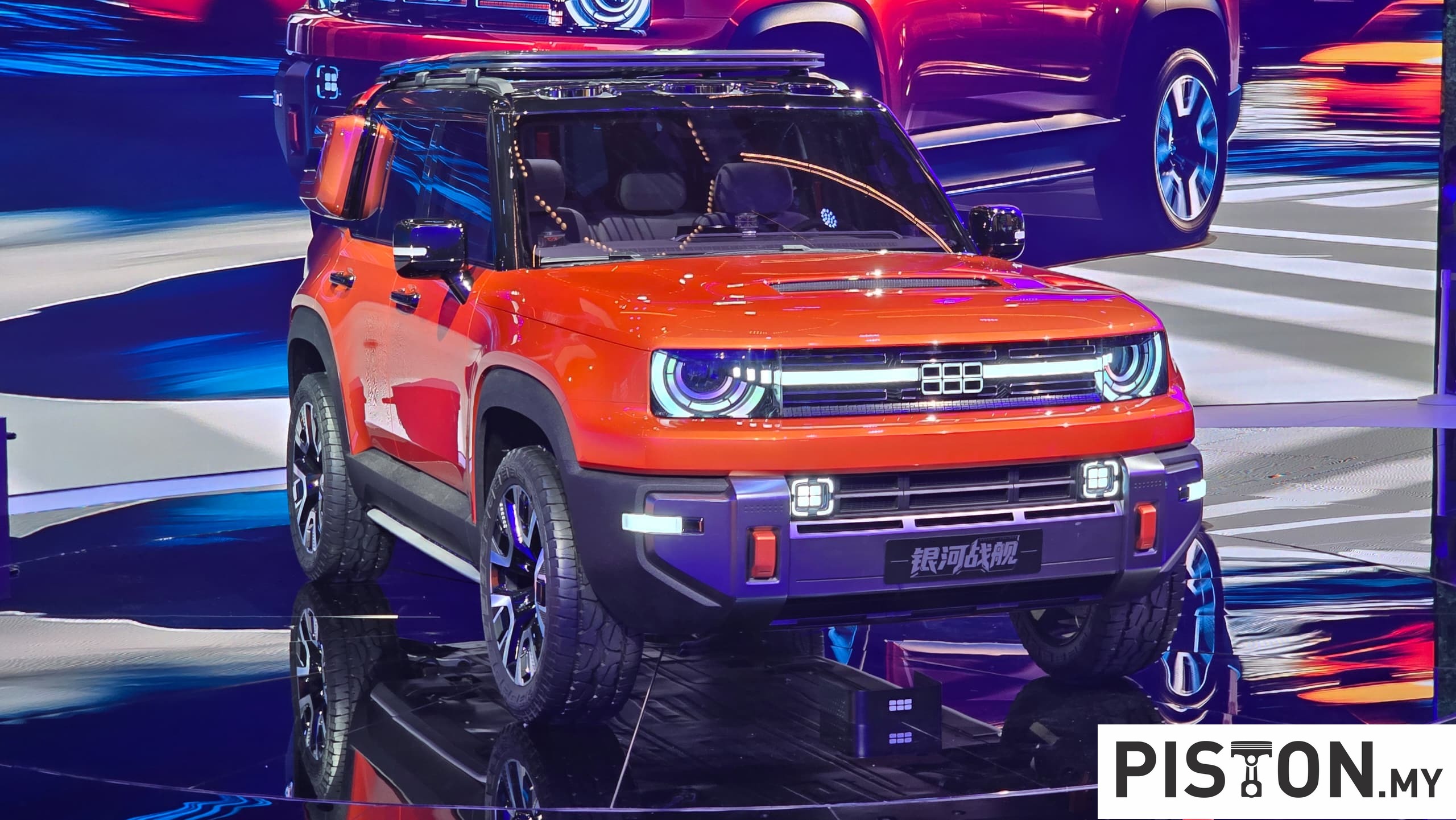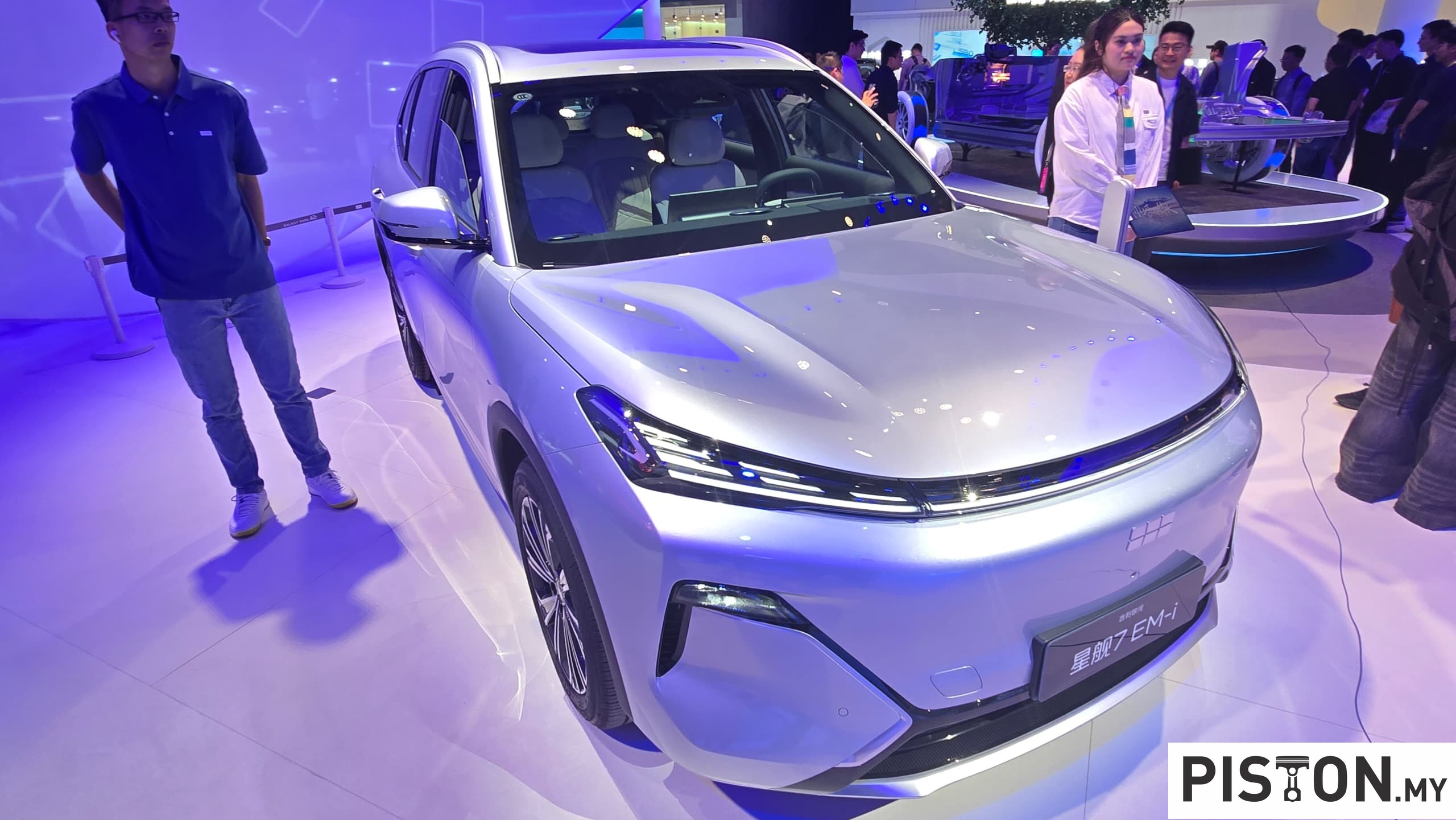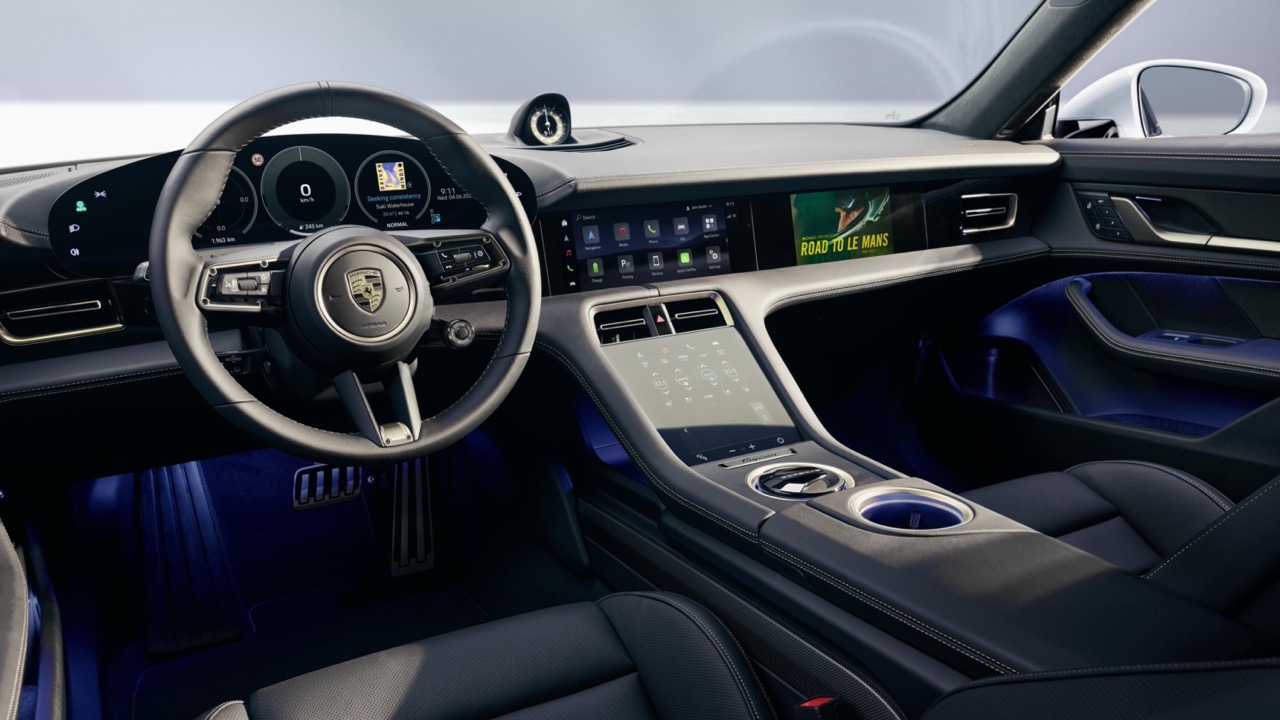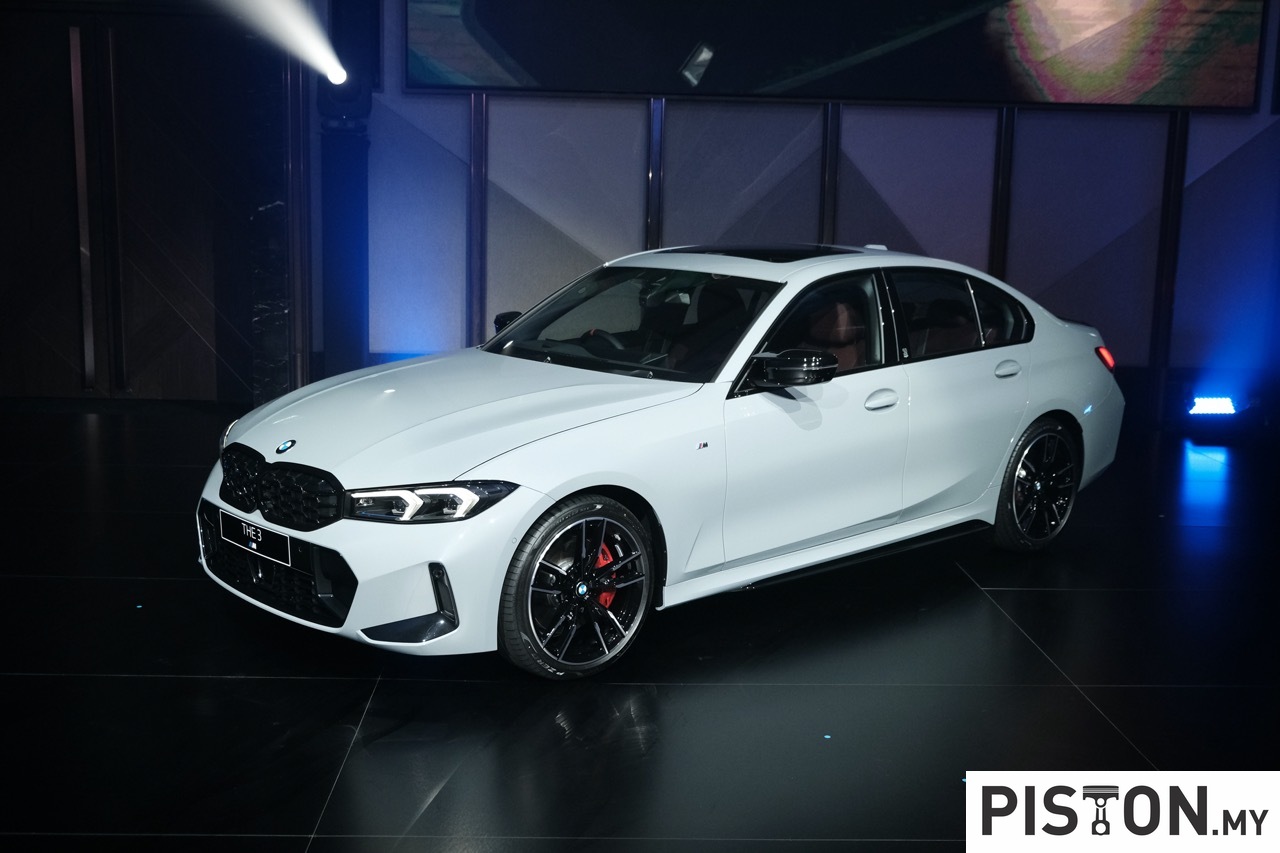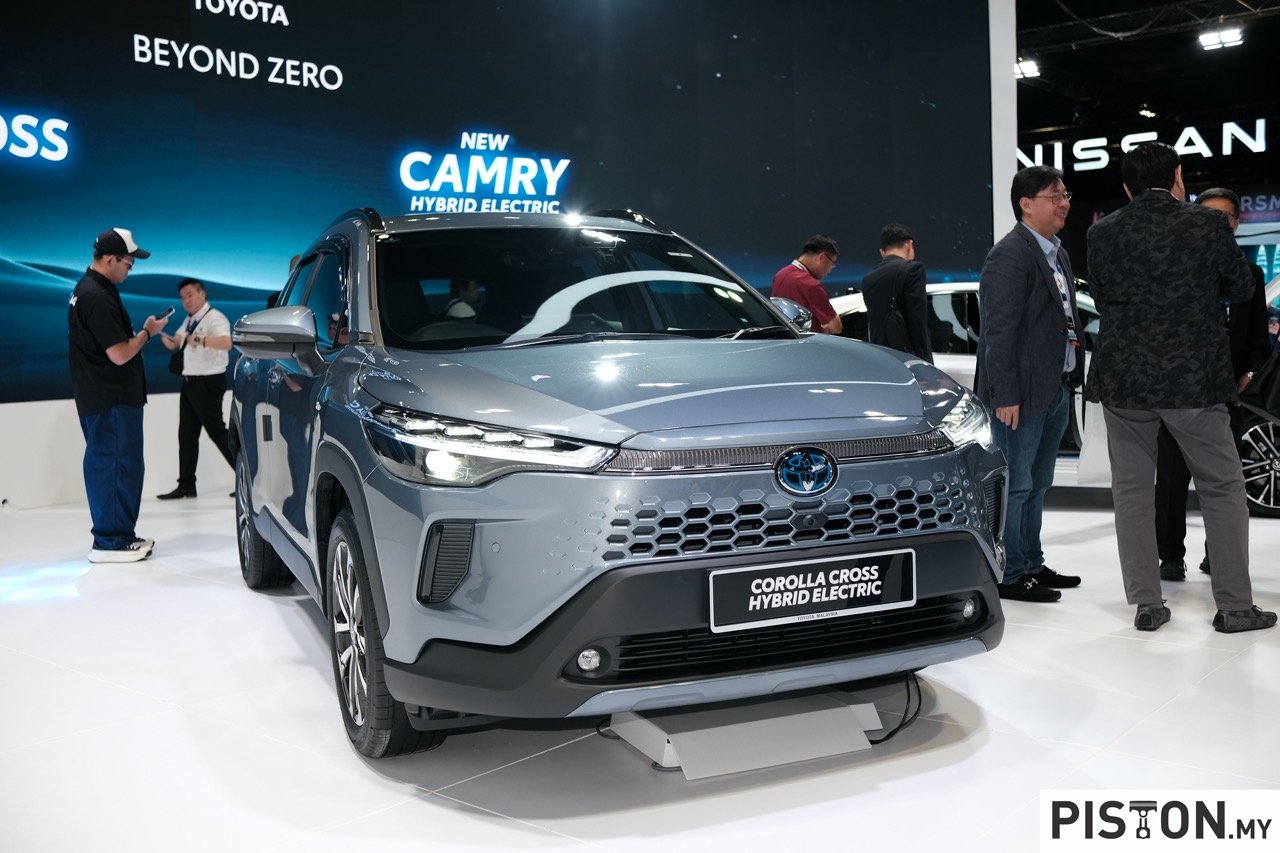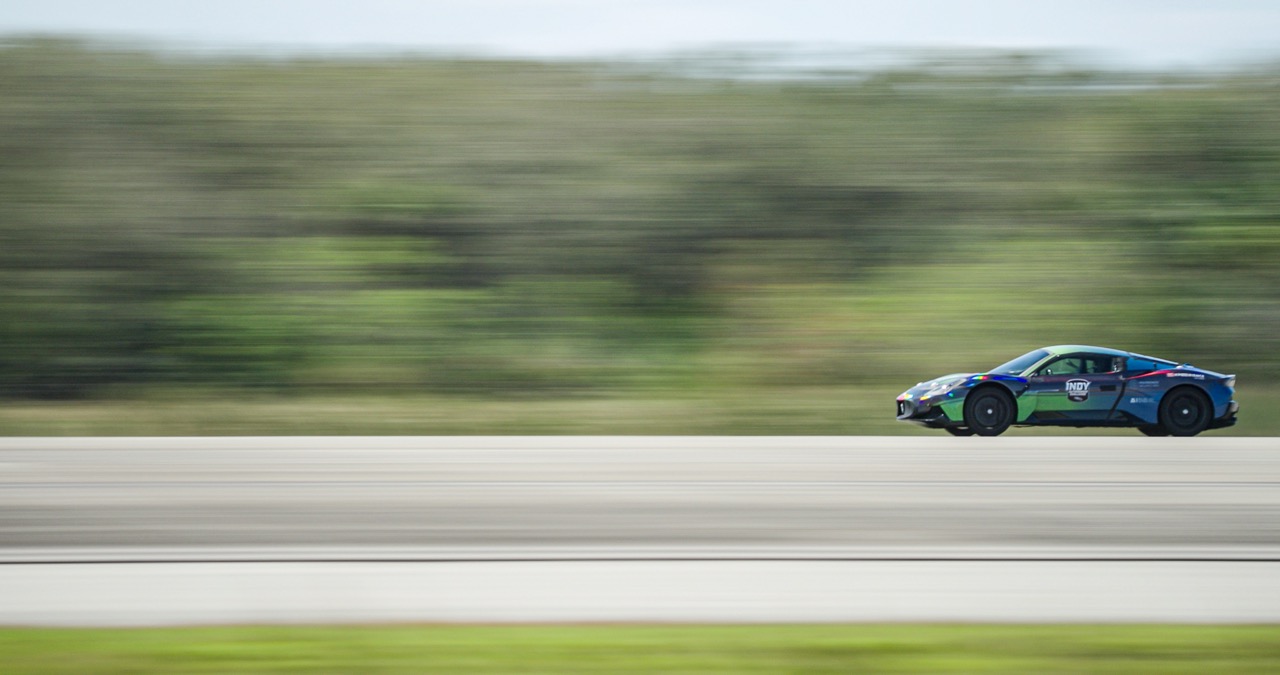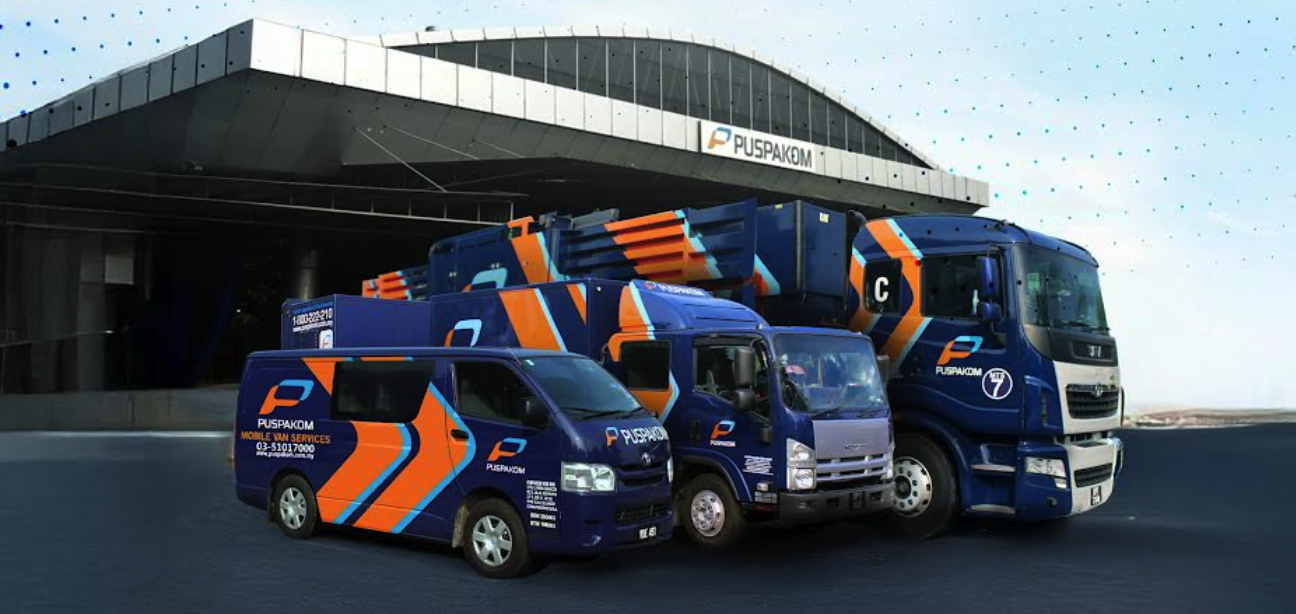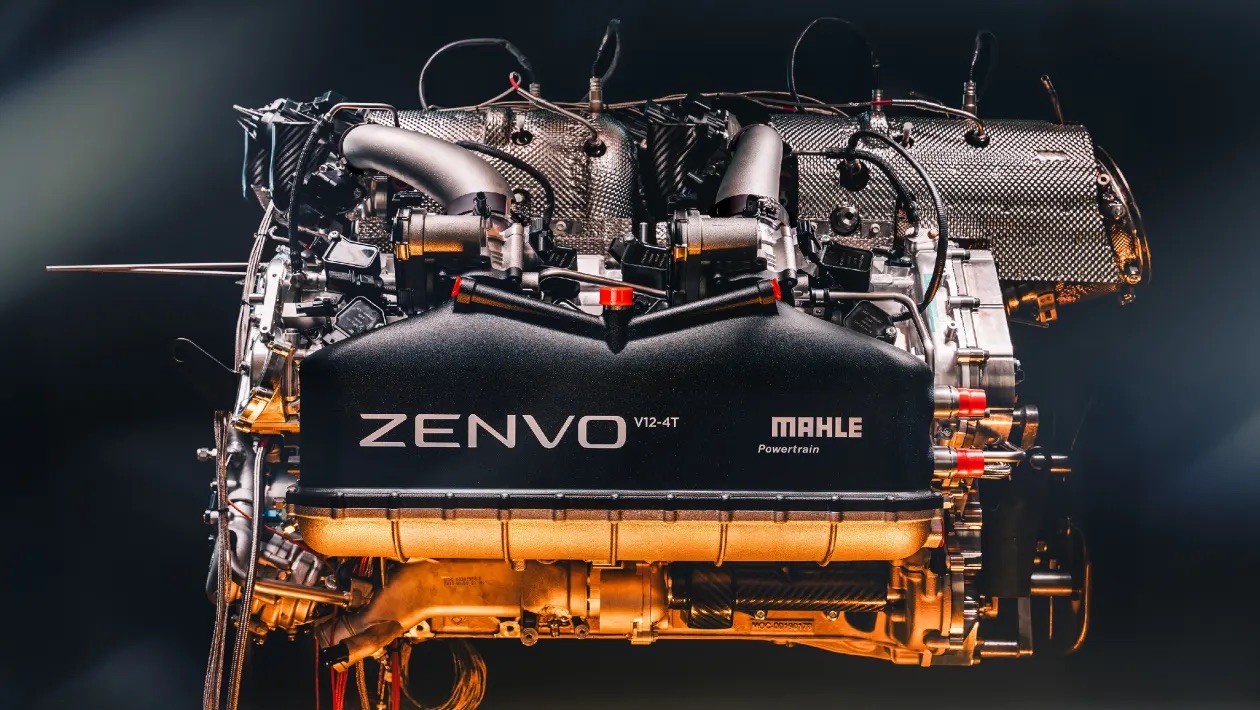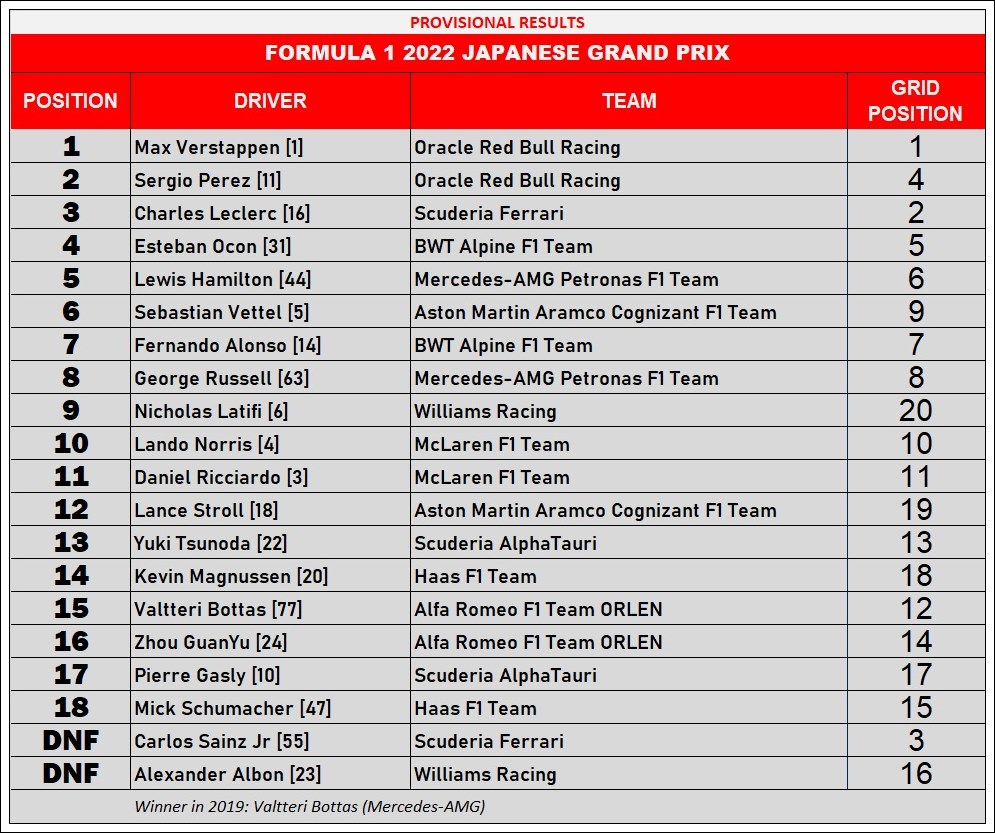
The Japanese F1 Grand Prix has always been popular with the drivers, with the great Japanese hospitality and fans giving them a warm welcome at Suzuka after missing the races for two years. Polite as ever, the Japanese fans accord every driver – especially their home hero, Yuki Tsunoda of the Scuderia Alphatauri team – the same enthusiastic cheers.
As with many Japanese GPs in past years, it rained a lot and as the cars went on their formation lap, it was still raining. So Red Bull Racing’s Max Verstappen, who could become world champion today, was glad to have received only a reprimand for the incident with McLaren’s Lando Norris during qualifying, allowing him to keep his pole position. Alongside was Ferrari’s Charles Leclerc who likewise would have a clear view of the track ahead as the cars headed to the first turn.
Behind, the other drivers would have to be super alert as they strained to see through the water spraying up from other cars. In some years, conditions could be really bad – as in 1976 when Niki Lauda chose to retire when he considered the risks caused by the heavy rain to be too great.
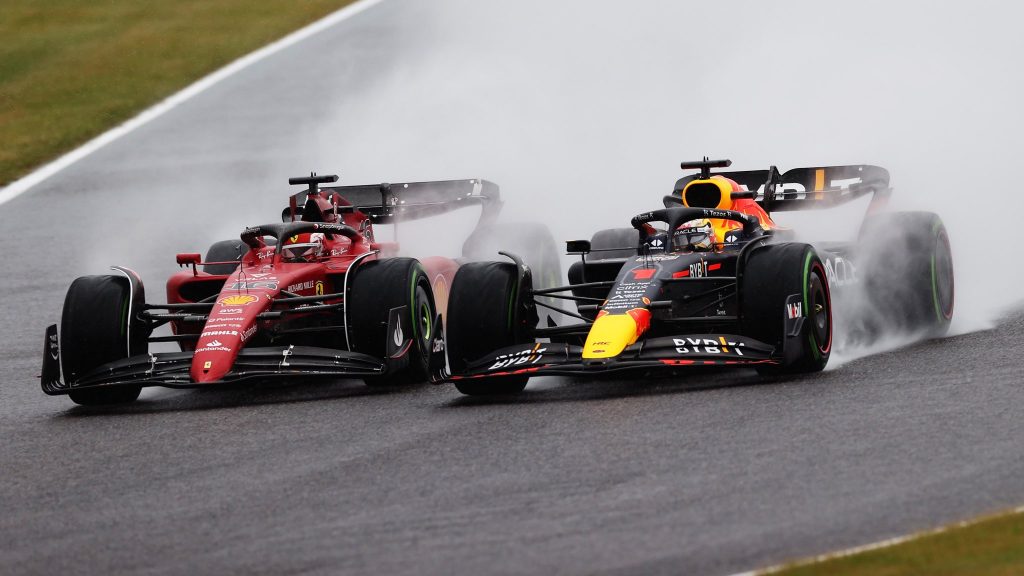
But over 45 years later, tyres have gained better grip and although the drivers’ eyes still see things the same way as Lauda did, racing can still proceed at a fast pace. And it was Leclerc who was quick off the line, taking the lead as Verstappen seemed to struggle to move off. But Leclerc’s lead was brief and at the first turn, the Dutchman braked a bit later and surged into the lead. Even then, his team boss, Charles Horner, would reveal later that Verstappen also had difficulty seeing ahead properly.
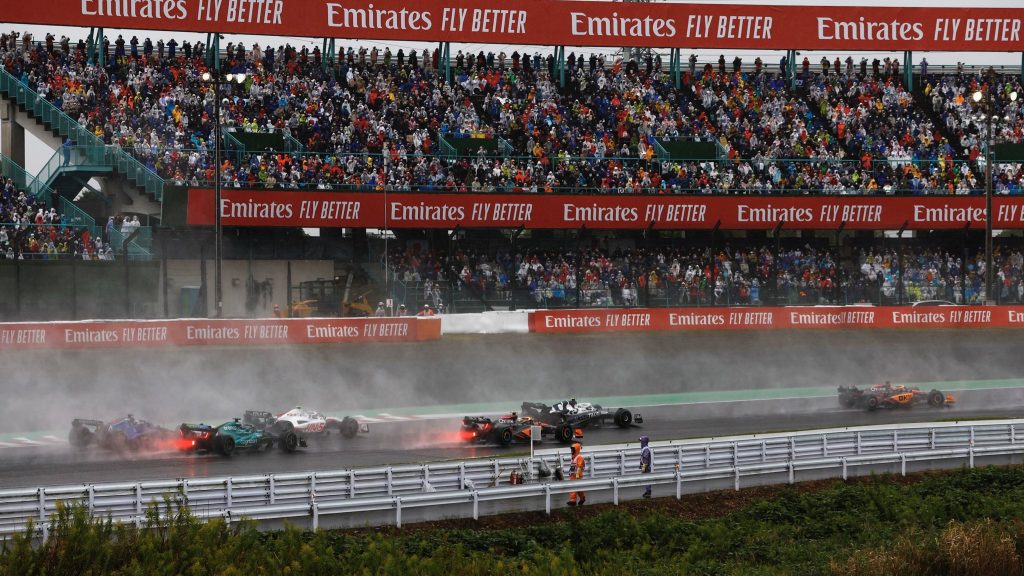
Impressive as that effort was, Verstappen could not start to extend his lead as various incidents behind brought the red flags and Mercedes-AMG Safety Car out. Aston Martin’s Sebastian Vettel had spun (alleging that Alpine’s Fernando Alonso had bumped into him) and though he didn’t hit anyone, Ferrari’s Carlos Sainz slid into the barriers after the hairpin. Scuderia Alphatauri’s Pierre Gasly also hit something and collected a board on his car!
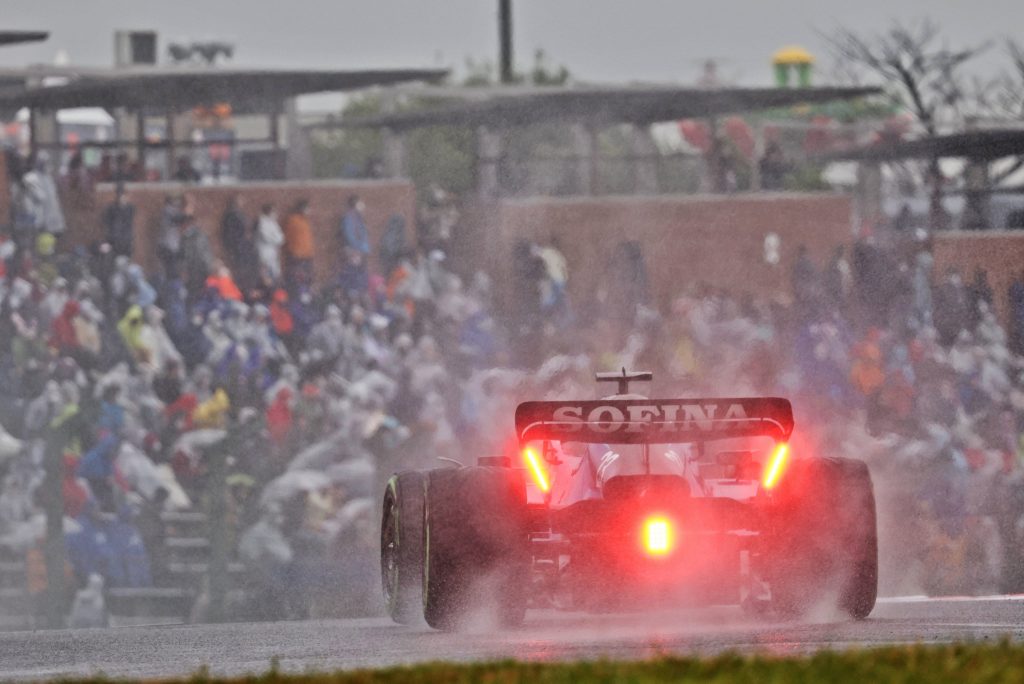
Williams Racing’s Alexander Albon and Alfa Romeo ORLEN’s Zhou Guan-Yu also had a near miss as Zhou spun but Albon later had to retire due to some damage to the car’s hydraulics. The conditions were too wet and visibility poor that the officials decided to stop the race. The weather forecasters said that the downpour was heaviest at that time but would diminish after 10 minutes. As the rain was so heavy and the cars were parked in the open in the pitlane, the teams were allowed to put up awnings over them for shelter.
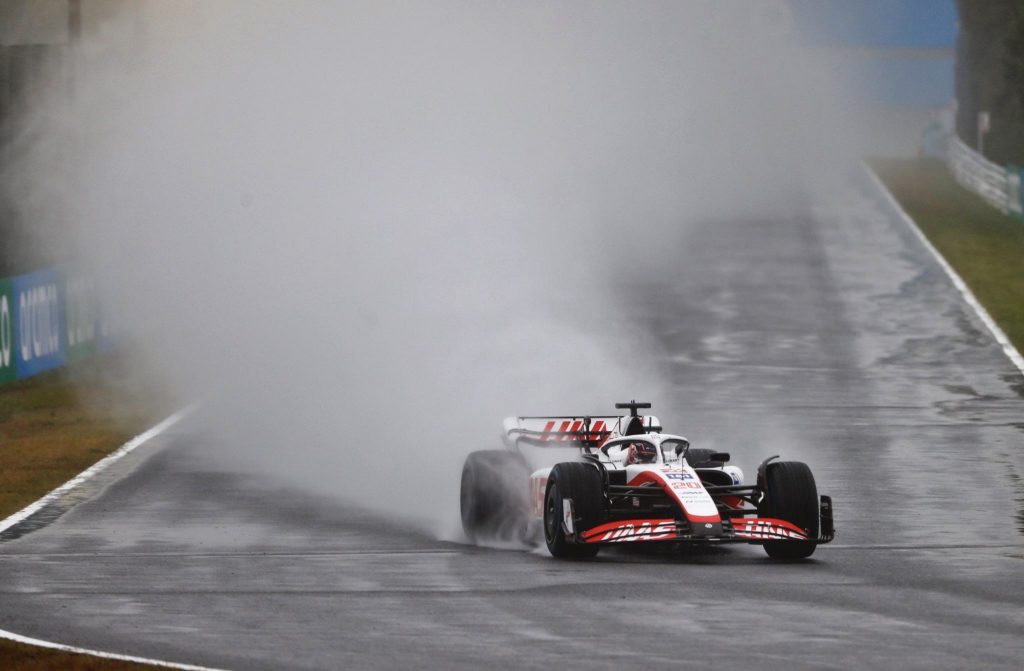
The 10 minutes came and went, and the rain remained as heavy as ever. 40 minutes after the race had started, the Safety Car had already circulated for 19 laps around the Suzuka circuit.

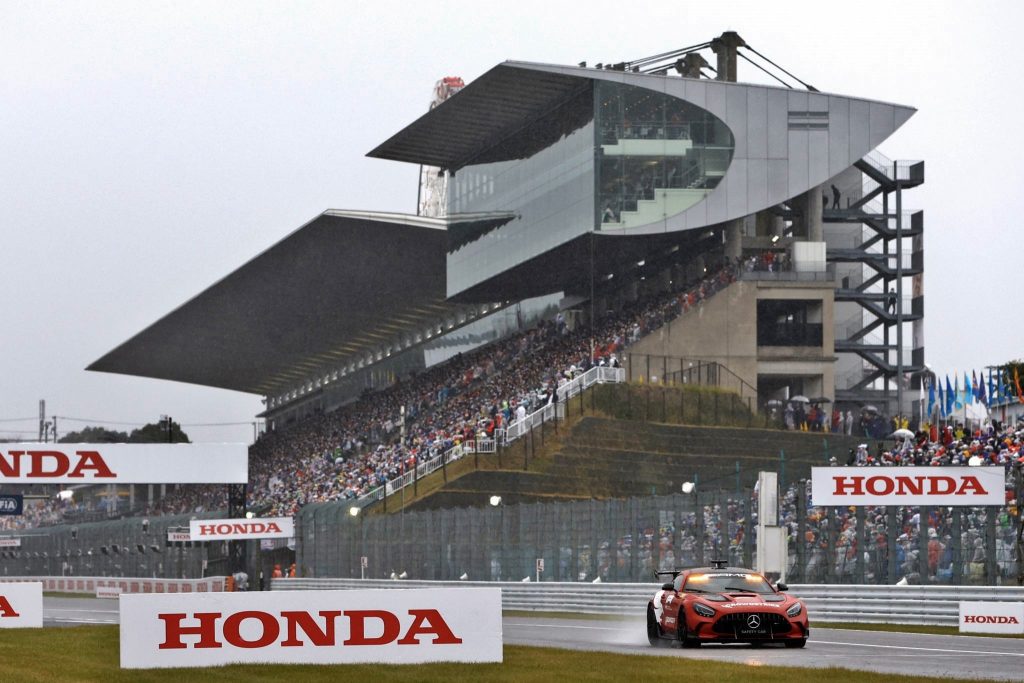
The suspension of the race for so long allowed people to look again at the videos and many, including Gasly, saw that there was a recovery vehicle on the track before the red flags had appeared. Recalling the Jules Bianchi tragedy in 2014, some teams began to demand an explanation from the race officials. In the 2014 accident, Bianchi (driving for the Marussia F1 team) slid off the track and hit a crane that was removing another vehicle while yellow flags were waved. He never regained consciousness after the crash and died in hospital.
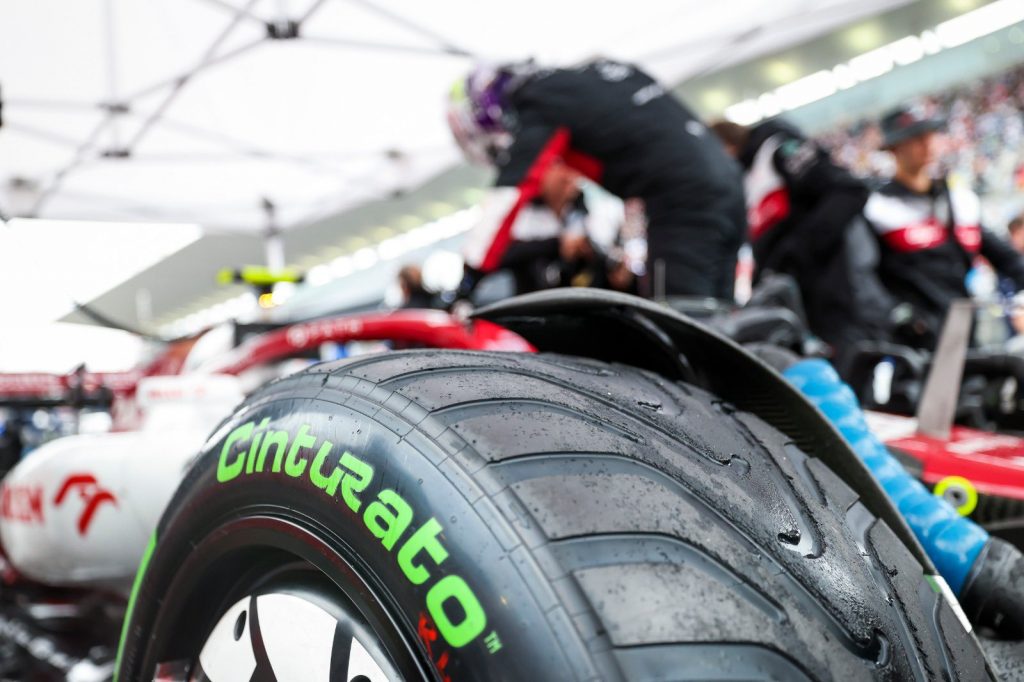
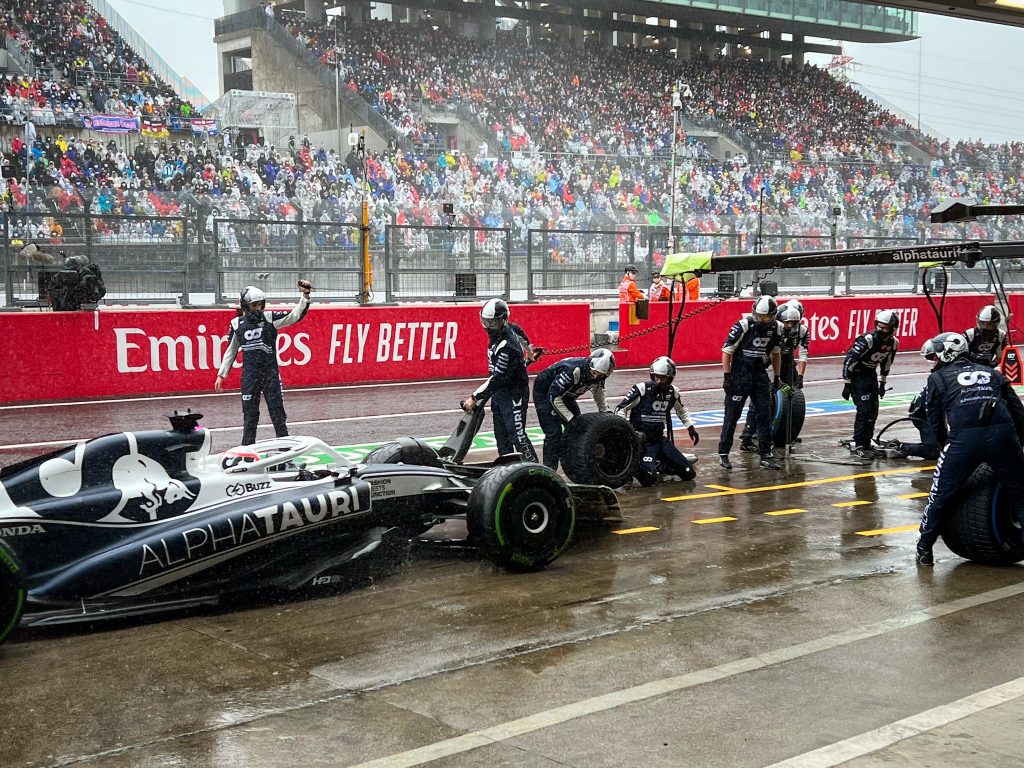
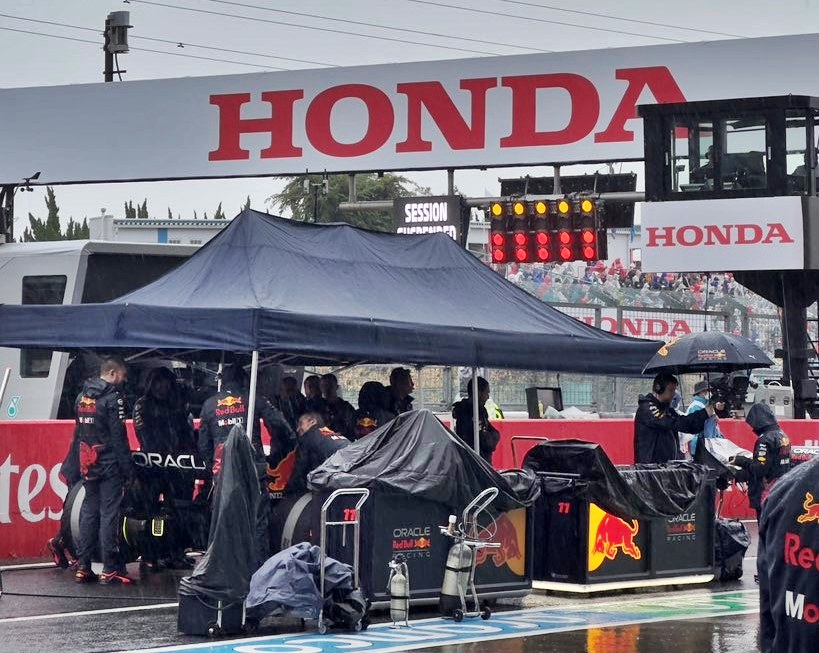
During the race suspension, the officials stated that the red flag was shown before Gasly had passed the spot where the truck was. It seemed that, instead of focussing on the danger of the truck being there, they investigated Gasly for driving at 250 km/h when the red flags were allegedly shown and summoned him for a meeting at 6 pm (Japan time). This certainly angered and disappointed the F1 community who had been distressed by Bianchi’s death.
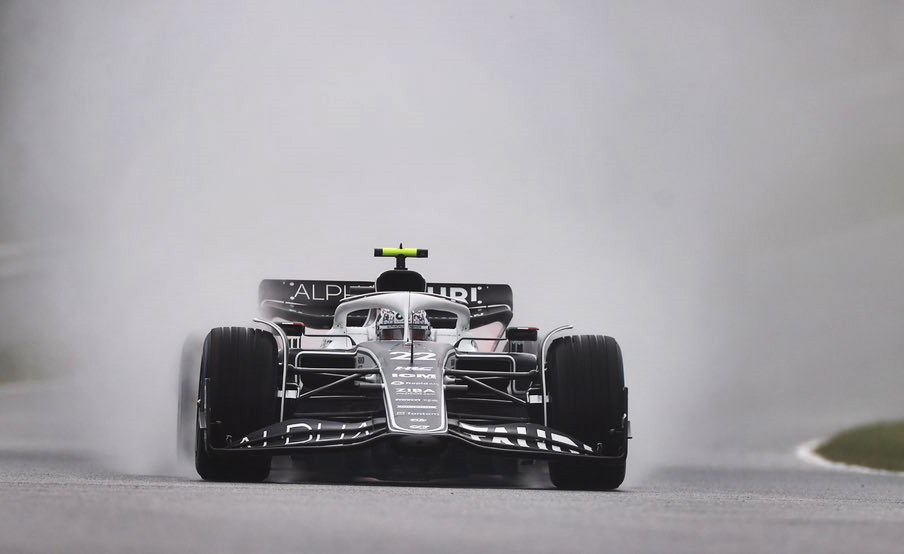
The race was to be restarted 52 minutes after the original start and all teams were told to fit only wet tyres on their cars. However, 12 minutes after that message was issued, another one came that the race would remain suspended. The teams were told that they would get at least 10 minutes advance notification of a restart. Only 3 laps of the 53-lap race had been run. Perhaps the Japanese GP needs to be run at another time of the year? Or maybe climate change makes it difficult to choose the best time now…
At 4:05 pm, the teams were given notice that the race would resume at 4:15 pm in view of reduced rain. The patient Japanese spectators (all tickets for the race had been sold out) would at least get to see cars racing around. However, the first laps would still be run with the Safety Car at the front so that conditions could be assessed. At that point, only around 45 minutes of racing time would remain. At least 27 laps needed to be completed for half points to be awarded.
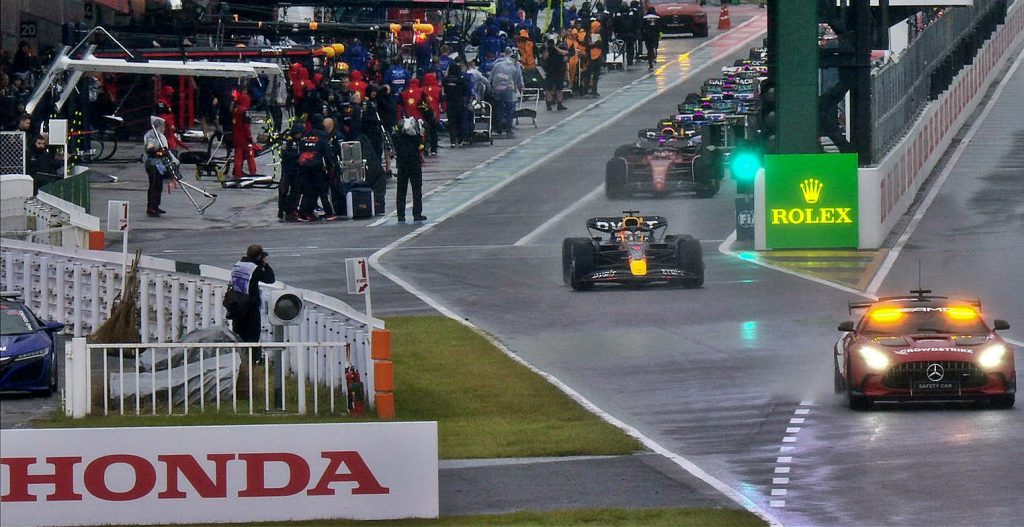
As the cars went round, there were different opinions on conditions, with those further back uncomfortable with them. On what was lap 5 of the race, the F1 Safety Car pulled in and racing was on again.
Full wet tyres don’t last but the drivers had to keep them for a while although Vettel and Williams Racing’s Nicholas Latifi managed to get into the pits to switch to intermediates. Their haste would get the attention of the Stewards who saw an Unsafe Release but did not take any action.
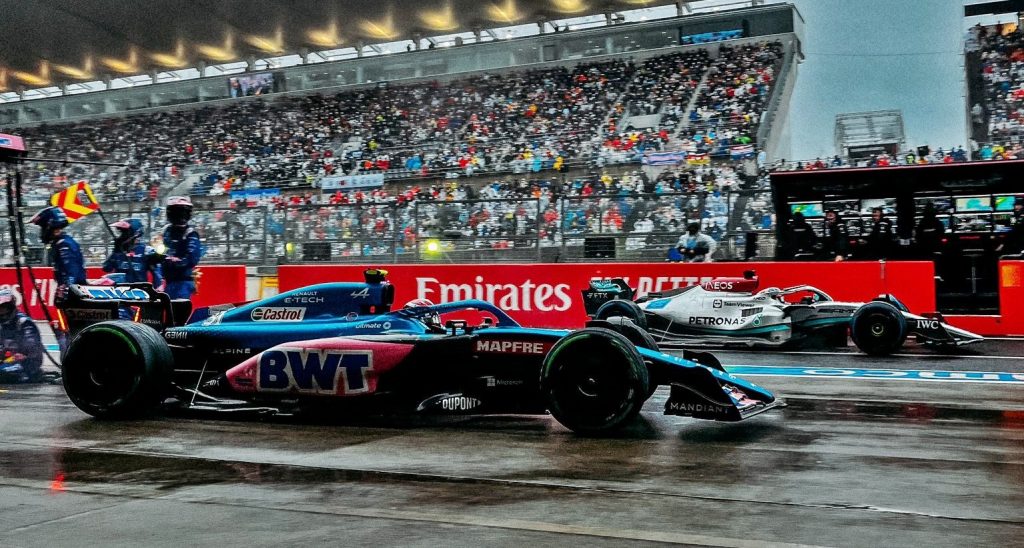
The other frontrunners began coming in for intermediates 3 laps later. With the leaders coming in, it was Alonso who inherited the lead for a while until he too came in and Verstappen regained the top place. The Mercedes-AMG team suggested to George Russell to come in and switch tyres, but he felt that he had the advantage of a clear track and probably wanted to maximise his chance to move up first.
On lap 10, the order was Verstappen at the front, with Leclerc 4 seconds behind and Perez 8 seconds behind the Ferrari driver. Ocon and Hamilton were in a dual for fourth place. The track was beginning to dry but that also meant the intermediate tyres would overheat faster, not a good situation. The drivers may wished for a little bit of rain again – which was forecast to be coming.
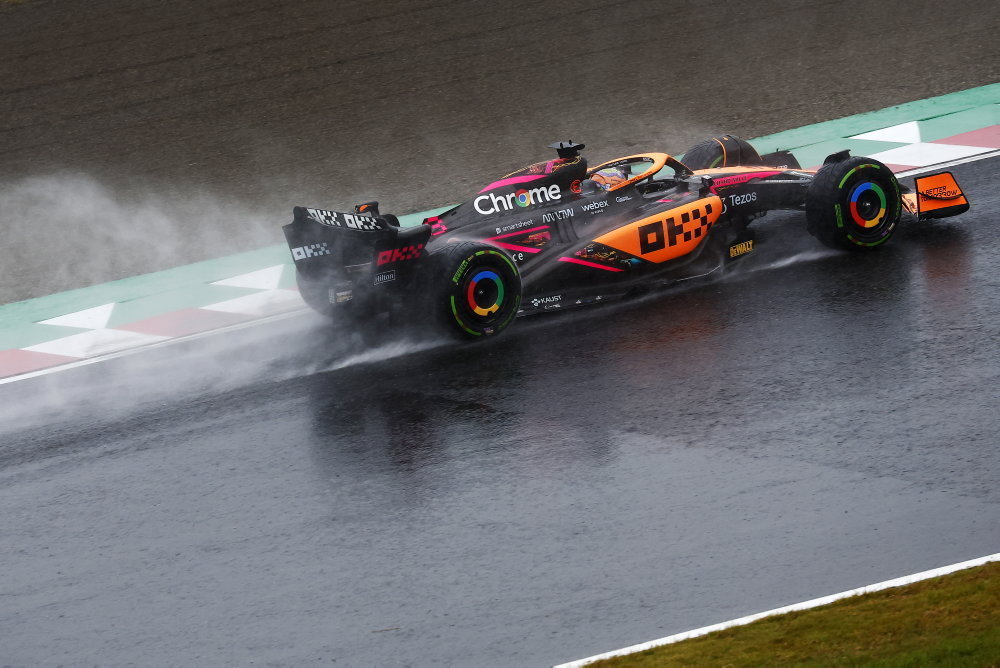
Lap 16 saw Leclerc fall as much as 10 seconds back from Verstappen, but he was reluctant to come in as pitting could mean a loss of at least 5 places. At the other end of the top 10, Russell had finally passed Norris and into the points-paying position – and hopefully, points would be awarded as 20 minutes remained and at least 11 more laps had to be finished.
The racing situation was such that drivers were reluctant to pit for a tyre change. To do so with the limited time meant they would not be able to regain the positions they lost, so it was deemed better to just race on till the end. Only 10 minutes remained by lap 22, so the aim would be to fight for the best finishing position and hope for some points.
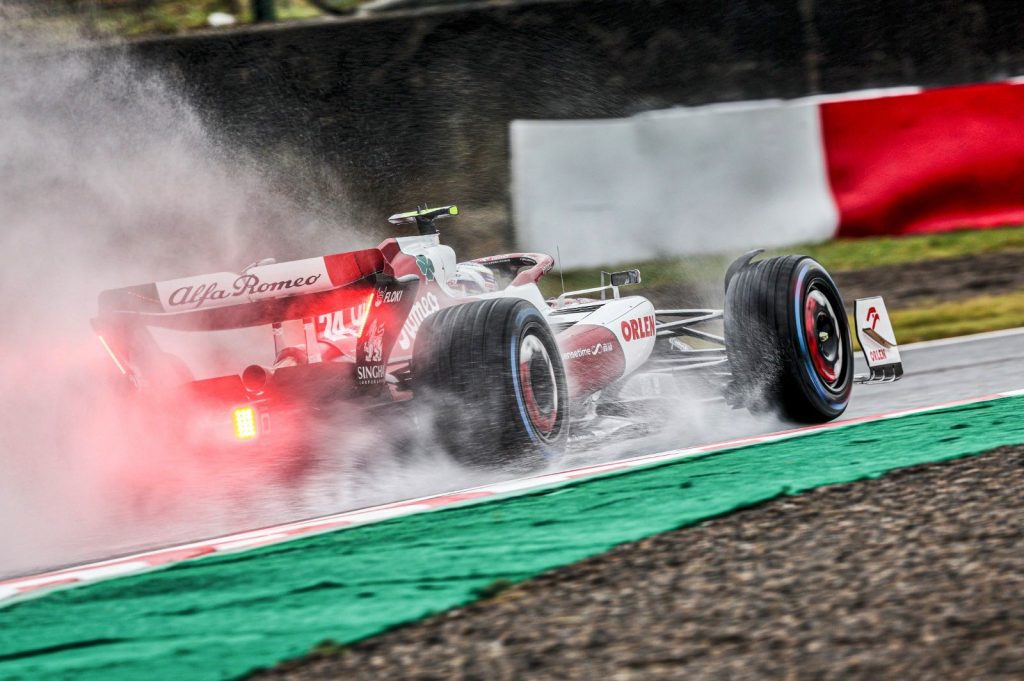
As Leclerc dropped back, Perez closed in to less than a second, so it was going to be a fight for second place with 7 minutes remaining. His team mate was comfortable in the lead and on the way to take the chequered flag for the greatly shortened Japanese GP. The only question was whether it would end with a Red Bull 1-2 finish.
Lap 27 was completed with less than 2 minutes remaining so there were 19 points for Verstappen to collect. And when the time was up 28 laps had been completed, and Verstappen was the winner of the race – and the 2022 F1 championship.
However, just before the finish line, the Ferrari driver had slid off the track and then Perez also did the same, claiming he had been ‘pushed off’. The Stewards felt that Leclerc, who crossed the line after Verstappen, had rejoined the race in an unsafe manner and gave him a 5-second penalty. So Red Bull got their 1-2 after all.
